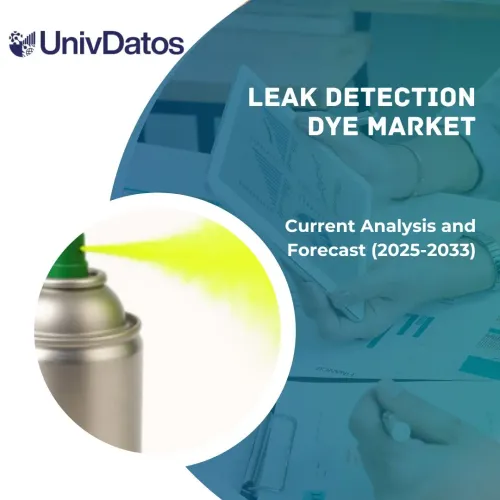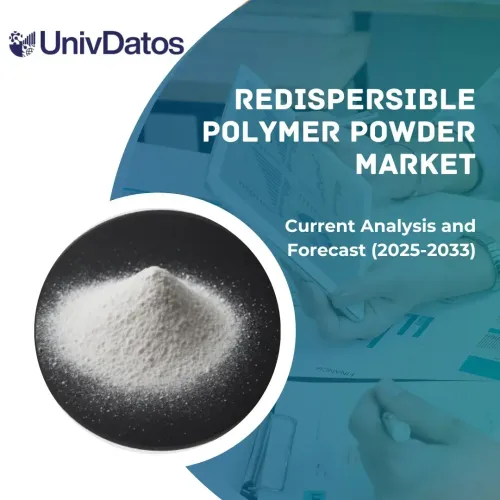Рынок синтетической соляной кислоты: текущий анализ и прогноз (2023-2030 гг.)
Акцент на типе (соляная кислота промышленного и пищевого класса), конечном пользователе (продукты питания и напитки, фармацевтика, текстиль, сталь, нефть и газ, химическая промышленность и другие), применении (органическое химическое сырье, очистка и обработка металлов, пищевая и молочная промышленность, водоподготовка и другие) и регионе/стране
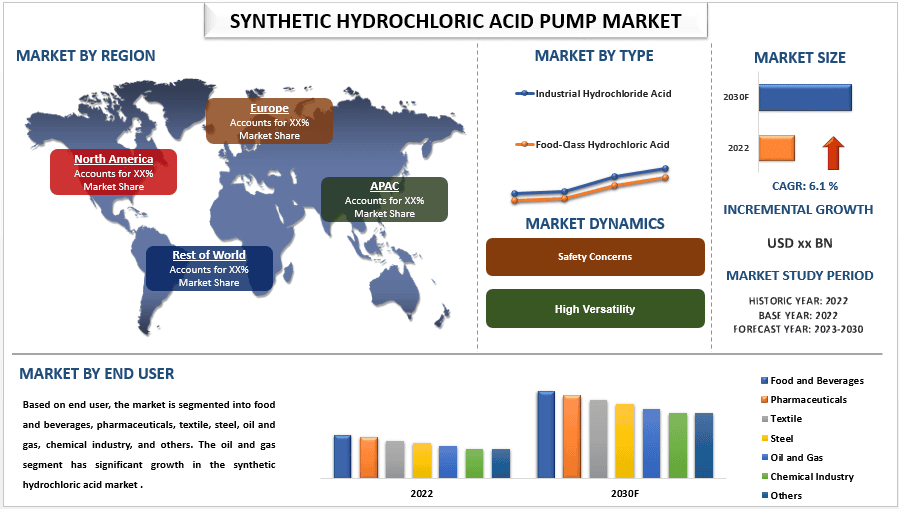
Ожидается, что рынок синтетической соляной кислоты будет расти со значительным среднегодовым темпом роста около 6,9 % в течение прогнозируемого периода. Соляная кислота используется для производства различных лекарств и вакцин. Она используется в различных химических реакциях, таких как нейтрализация, подкисление и образование солей. Расширение глобального фармацевтического рынка, а также растущий спрос на новые и инновационные лекарства стимулируют спрос на соляную кислоту во всем мире. Кроме того, соляная кислота используется для очистки и дезинфекции оборудования в пищевой промышленности и производстве напитков. Она также используется для обработки пищевых продуктов, таких как фрукты и овощи, а также для регулирования pH продуктов питания и напитков. Растущий спрос на упакованные и обработанные продукты питания, а также растущая осведомленность о безопасности и гигиене пищевых продуктов стимулируют спрос на соляную кислоту во всем мире. Например, в январе 2020 года компания Formosa Plastics объявила о расширении своих предприятий по производству хлорщелочи в США, Тайване и Китае. Расширение также увеличит производственные мощности Formosa Plastics по производству соляной кислоты.
Некоторые из основных игроков, работающих на рынке, — DuPont, Olin Corporation, Occidental Petroleum Corporation, Westlake Corporation, INEOS AG, BASF, Shin-Etsu Chemical Co., Ltd., Detrex Corporation, Solvay и ERCO Worldwide. Этими игроками было предпринято несколько M&As наряду с партнерствами, чтобы предоставить клиентам высокотехнологичные и инновационные продукты/технологии.
Основные сведения, представленные в отчете
«Среди типов, сегмент промышленной соляной кислоты занимал значительный рост на рынке в 2022 году».
На основе типа рынок сегментирован на промышленную соляную кислоту и соляную кислоту пищевого класса. Среди них сегмент промышленной соляной кислоты занимал значительный рост на рынке в 2022 году. Этот рост обусловлен тем, что эта кислота используется в широком спектре промышленных применений, включая сталь, травление, пищевую промышленность и химическое производство. Кроме того, соляная кислота высокой чистоты используется в ряде новых областей применения, таких как производство полупроводников и солнечной энергии. Ожидается, что спрос на соляную кислоту высокой чистоты будет расти в ближайшие годы.
«Среди конечных пользователей сегмент продуктов питания и напитков занимал значительную долю рынка в 2022 году».
На основе конечного пользователя рынок сегментирован на продукты питания и напитки, фармацевтику, текстиль, сталь, нефть и газ, химическую промышленность и другие. Среди них сегмент продуктов питания и напитков занимал значительную долю на рынке синтетической соляной кислоты в 2022 году из-за увеличения спроса на обработанные и упакованные продукты питания. Глобальный спрос на обработанные и упакованные продукты питания и напитки растет, что стимулирует спрос на рынке соляной кислоты. Потребители все больше осведомлены о безопасности пищевых продуктов, что приводит к увеличению спроса на пищевую соляную кислоту.
«В Европе наблюдается значительный рост рынка синтетической соляной кислоты в 2022 году».
Европа имеет сильную промышленную базу, которая включает в себя несколько отраслей, являющихся основными потребителями соляной кислоты, таких как сталь, химикаты, продукты питания и напитки. Кроме того, европейские компании находятся в авангарде разработки и использования передовых технологий для производства соляной кислоты. Это дает им конкурентное преимущество на мировом рынке. В дополнение к этим факторам, Европа имеет хорошо развитую транспортную и логистическую инфраструктуру, что облегчает транспортировку соляной кислоты клиентам. В Европе имеется большой пул квалифицированных рабочих, имеющих опыт работы в этой области. В целом, сильная промышленная база Европы, передовые технологии, благоприятная нормативно-правовая база и другие преимущества делают ее значительным фактором роста рынка синтетической соляной кислоты.Top of Form Например, в сентябре 2022 года компания Solvay объявила о завершении строительства своего нового предприятия по производству соляной кислоты в Антверпене, Бельгия. Новое предприятие имеет мощность 200 000 тонн в год и поможет удовлетворить растущий спрос на соляную кислоту в Европе.
Отчет об охвате рынка синтетической соляной кислоты
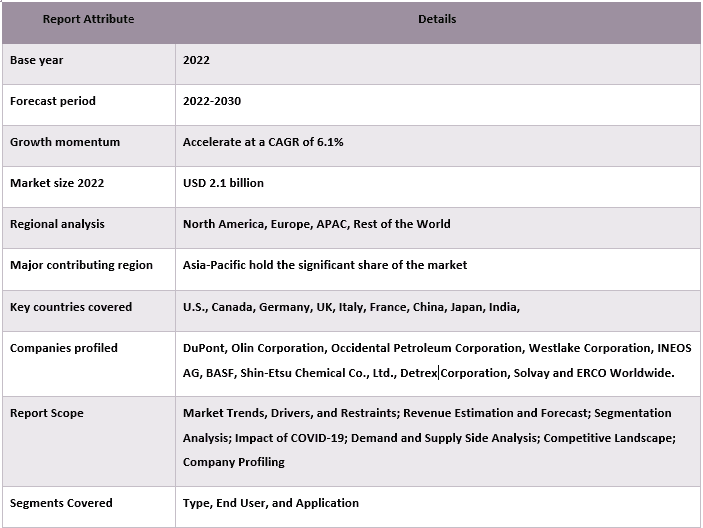
Причины купить этот отчет:
- Исследование включает в себя анализ размера и прогнозирования рынка, подтвержденный проверенными ключевыми экспертами отрасли.
- Отчет представляет собой краткий обзор общей производительности отрасли с первого взгляда.
- Отчет охватывает углубленный анализ видных коллег по отрасли с основным упором на ключевые финансовые показатели бизнеса, портфели продуктов, стратегии расширения и последние разработки.
- Подробное изучение факторов, ограничений, ключевых тенденций и возможностей, преобладающих в отрасли.
- Исследование всесторонне охватывает рынок по различным сегментам.
- Глубокий анализ отрасли на региональном уровне.
Варианты настройки:
Глобальный рынок синтетической соляной кислоты может быть дополнительно настроен в соответствии с требованиями или любым другим сегментом рынка. Кроме того, UMI понимает, что у вас могут быть свои собственные потребности в бизнесе, поэтому не стесняйтесь обращаться к нам, чтобы получить отчет, который полностью соответствует вашим требованиям.
Содержание
Методология исследования для анализа рынка синтетической соляной кислоты (2022–2030 гг.)
Анализ исторического рынка, оценка текущего рынка и прогнозирование будущего рынка глобального рынка синтетической соляной кислоты были тремя основными шагами, предпринятыми для создания и анализа внедрения синтетических соляных кислот в основных регионах мира. Было проведено исчерпывающее вторичное исследование для сбора исторических рыночных данных и оценки текущего размера рынка. Во-вторых, для проверки этих данных были приняты во внимание многочисленные результаты и предположения. Кроме того, были проведены подробные первичные интервью с отраслевыми экспертами по всей цепочке создания стоимости глобального рынка синтетической соляной кислоты. После предположений и проверки рыночных данных посредством первичных интервью мы использовали нисходящий/восходящий подход для прогнозирования общего размера рынка. После этого были приняты методы разбивки рынка и триангуляции данных для оценки и анализа размера рынка сегментов и подсегментов соответствующей отрасли. Подробная методология описана ниже:
Анализ исторического размера рынка
Шаг 1: Углубленное изучение вторичных источников:
Было проведено подробное вторичное исследование для получения исторических данных о размере рынка синтетической соляной кислоты из внутренних источников компании, таких как годовые отчеты и финансовая отчетность, презентации результатов деятельности, пресс-релизы и т. д., и внешних источников, включая журналы, новости и статьи, государственные публикации, публикации конкурентов, отраслевые отчеты, сторонние базы данных и другие надежные публикации.
Шаг 2: Сегментация рынка:
После получения исторических данных о размере рынка синтетической соляной кислоты мы провели подробный вторичный анализ для сбора исторических рыночных данных и долей для различных сегментов и подсегментов в основных регионах. Основные сегменты, включенные в отчет, – это тип, конечный пользователь и применение. Был проведен дальнейший анализ на уровне стран для оценки общего внедрения моделей тестирования в этом регионе.
Шаг 3: Факторный анализ:
После получения исторических данных о размере рынка для различных сегментов и подсегментов мы провели подробный факторный анализ для оценки текущего размера рынка синтетической соляной кислоты. Кроме того, мы провели факторный анализ, используя зависимые и независимые переменные, такие как тип, конечный пользователь и применение рынка синтетической соляной кислоты. Был проведен тщательный анализ сценариев спроса и предложения с учетом ведущих партнерств, слияний и поглощений, расширения бизнеса и запуска продуктов в секторе рынка синтетической соляной кислоты по всему миру.
Оценка текущего размера рынка и прогноз
Определение текущего размера рынка: на основе практических данных, полученных в результате вышеуказанных 3 шагов, мы определили текущий размер рынка, ключевых игроков на глобальном рынке синтетической соляной кислоты и рыночные доли сегментов. Все необходимые процентные доли и разбивки рынка были определены с использованием вышеупомянутого вторичного подхода и были проверены посредством первичных интервью.
Оценка и прогнозирование: для оценки и прогнозирования рынка различным факторам, включая движущие силы и тенденции, ограничения и возможности, доступные для заинтересованных сторон, были присвоены веса. После анализа этих факторов были применены соответствующие методы прогнозирования, то есть нисходящий/восходящий подход, для получения прогноза рынка на 2028 год для различных сегментов и подсегментов на основных рынках по всему миру. Методология исследования, принятая для оценки размера рынка, включает:
- Размер рынка отрасли с точки зрения дохода (в долларах США) и темпы внедрения рынка синтетической соляной кислоты на основных рынках внутри страны
- Все процентные доли, разбивки и деления рыночных сегментов и подсегментов
- Ключевые игроки на глобальном рынке синтетической соляной кислоты с точки зрения предлагаемых продуктов. Кроме того, стратегии роста, принятые этими игроками для конкуренции на быстрорастущем рынке.
Подтверждение размера рынка и доли
Первичное исследование: были проведены углубленные интервью с ключевыми лидерами мнений (KOL), включая руководителей высшего звена (CXO/вице-президенты, руководители отделов продаж, руководители отделов маркетинга, руководители отделов оперативной деятельности, региональные руководители, руководители стран и т. д.) в основных регионах. Затем были обобщены результаты первичного исследования и проведен статистический анализ для доказательства заявленной гипотезы. Данные первичного исследования были объединены с результатами вторичных исследований, что позволило превратить информацию в полезные сведения.
Распределение первичных участников по разным регионам
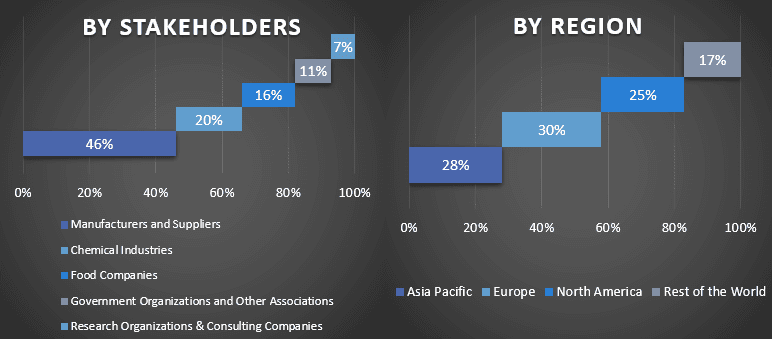
Инжиниринг рынка
Метод триангуляции данных был использован для завершения общей оценки рынка и получения точных статистических данных для каждого сегмента и подсегмента глобального рынка синтетической соляной кислоты. данные были разделены на несколько сегментов и подсегментов после изучения различных параметров и тенденций в областях типа, конечного пользователя и применения на глобальном рынке синтетической соляной кислоты.
Основная цель исследования глобального рынка синтетической соляной кислоты
В исследовании были точно определены текущие и будущие рыночные тенденции глобального рынка синтетической соляной кислоты. Инвесторы могут получить стратегические сведения, чтобы основывать свои решения об инвестициях на качественном и количественном анализе, выполненном в исследовании. Текущие и будущие рыночные тенденции определили общую привлекательность рынка на региональном уровне, предоставив промышленному участнику платформу для освоения неиспользованного рынка, чтобы воспользоваться преимуществом первопроходца. Другие количественные цели исследований включают:
- Анализ текущего и прогнозируемого размера рынка синтетической соляной кислоты с точки зрения стоимости (в долларах США). Кроме того, анализ текущего и прогнозируемого размера рынка различных сегментов и подсегментов.
- Сегменты исследования включают области типа, конечного пользователя и применения.
- Определение и анализ нормативно-правовой базы для синтетической соляной кислоты
- Анализ цепочки создания стоимости, связанной с присутствием различных посредников, а также анализ поведения клиентов и конкурентов в отрасли.
- Анализ текущего и прогнозируемого размера рынка синтетической соляной кислоты для основного региона.
- Основные страны регионов, изученные в отчете, включают Азиатско-Тихоокеанский регион, Европу, Северную Америку и остальной мир.
- Профили компаний рынка синтетической соляной кислоты и стратегии роста, принятые участниками рынка для поддержания устойчивости на быстрорастущем рынке.
- Углубленный анализ отрасли на региональном уровне
Часто задаваемые вопросы Часто задаваемые вопросы
Q1: Каков текущий размер рынка и потенциал роста глобального рынка синтетической соляной кислоты?
Q2: Каковы движущие факторы роста глобального рынка синтетической соляной кислоты?
Q3: Какой сегмент имеет наибольшую долю на мировом рынке синтетической соляной кислоты по конечному пользователю?
Q4: Какой регион будет доминировать на мировом рынке синтетической соляной кислоты?
Q5: Кто является ключевыми игроками, работающими на глобальном рынке синтетической соляной кислоты?
Связанные Отчеты
Клиенты, купившие этот товар, также купили



